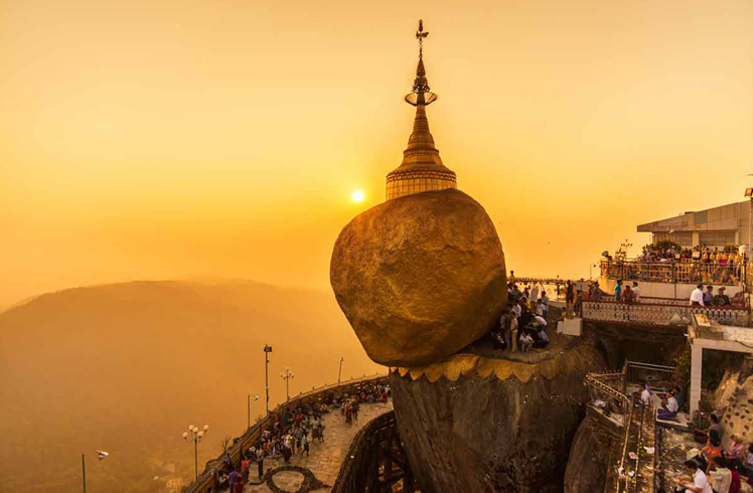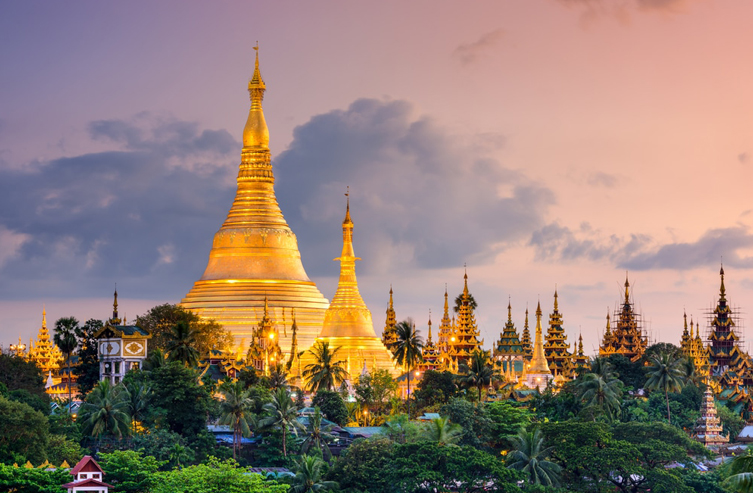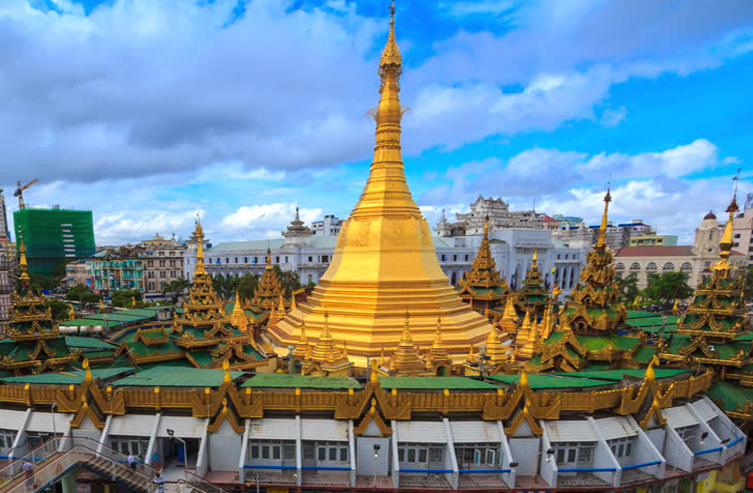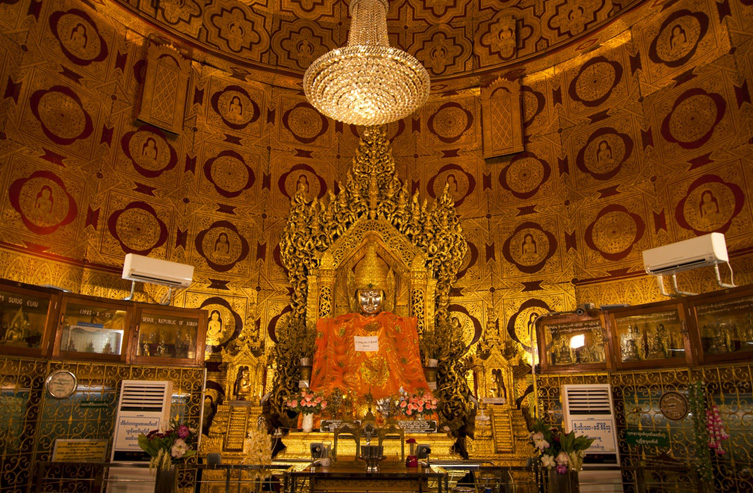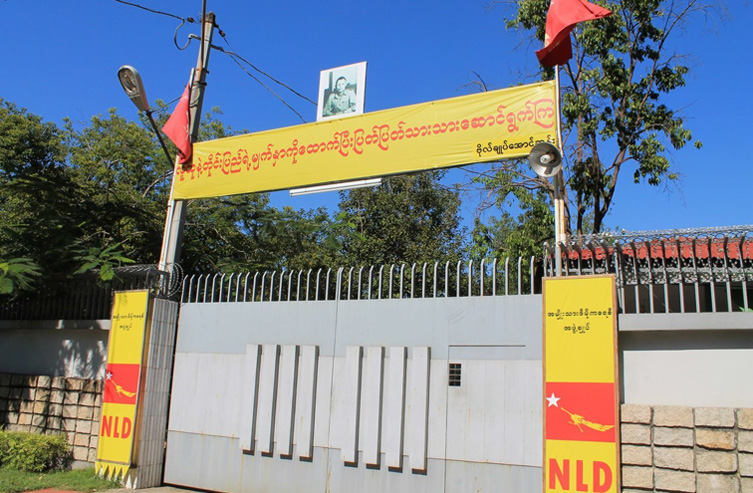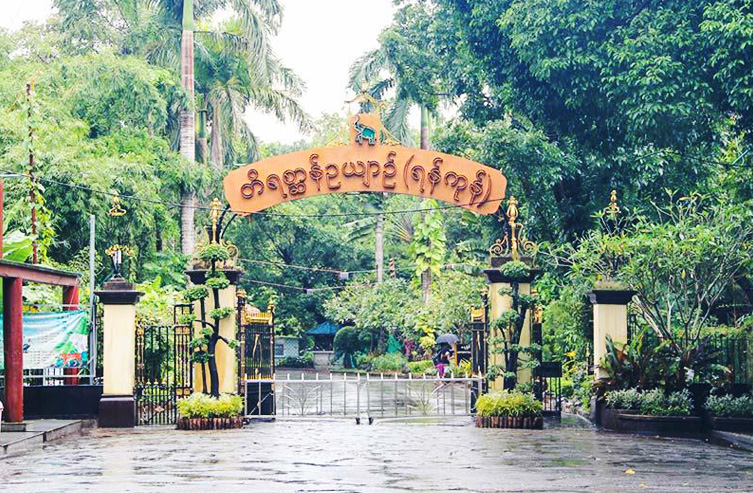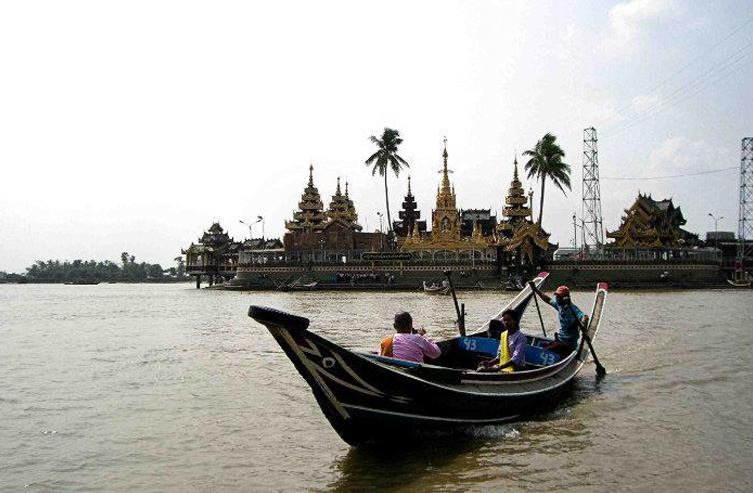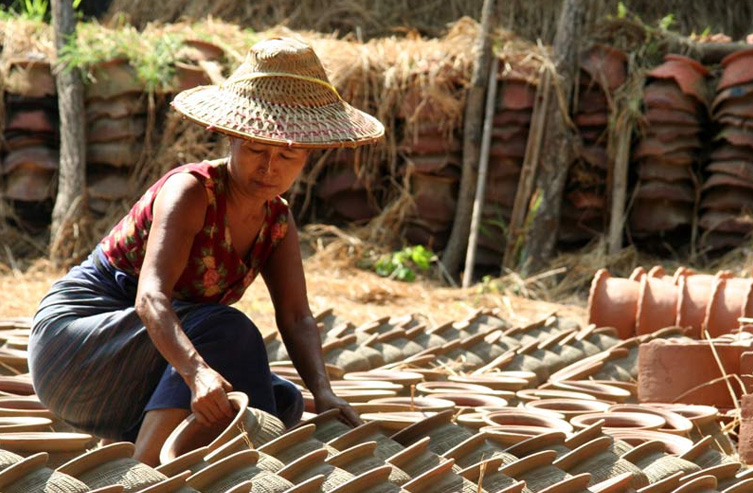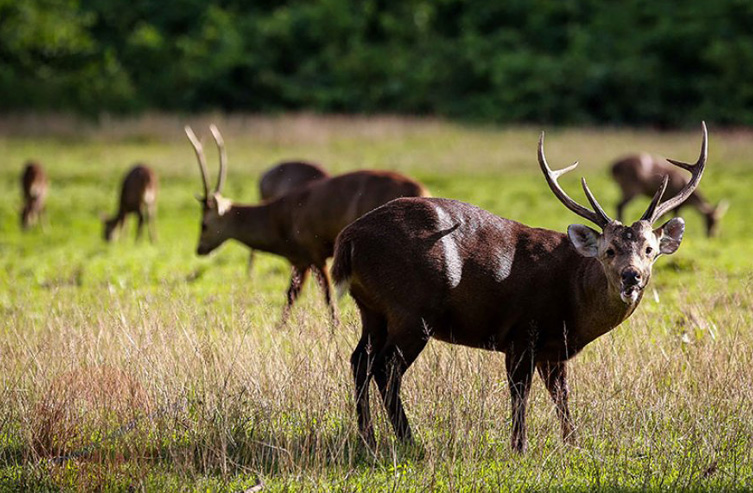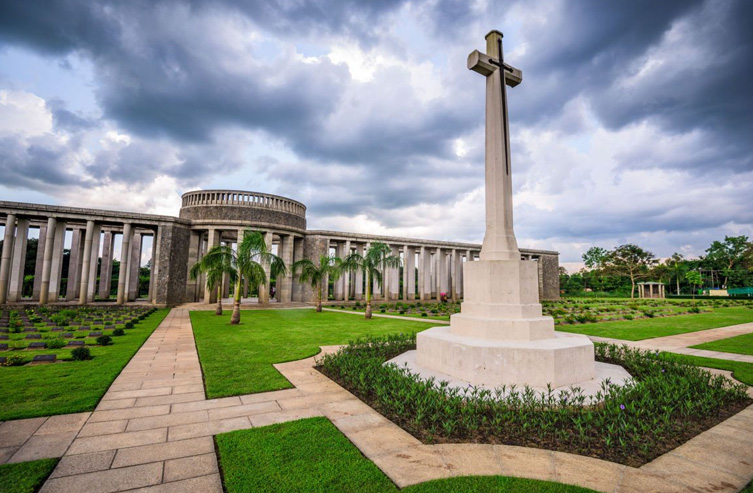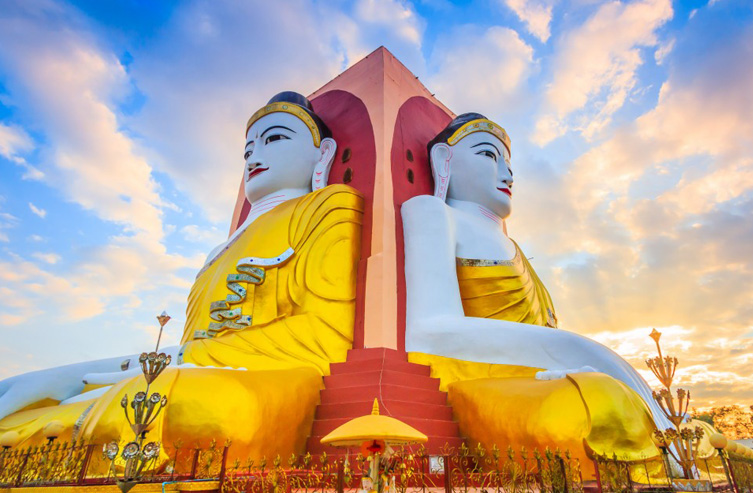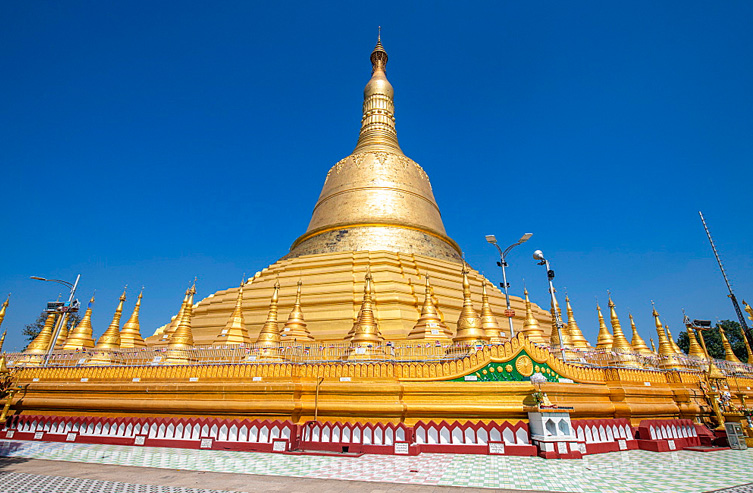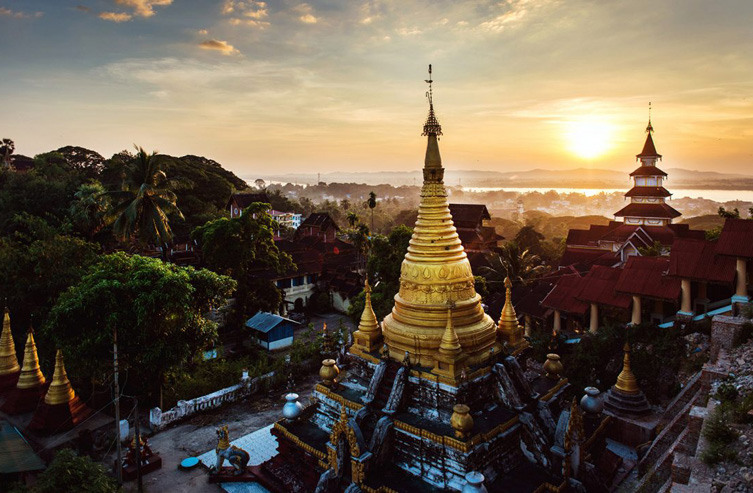Yangon is the former capital city of Myanmar and this is also the largest city in the country. Yangon was founded in 1755 by King Alaungpaya: he established Yangon on the location of a small town named Dagon when he dominated the lower part of Myanmar. He was the one who gave the name Yangon, meaning ‘End of Strife’. In 1885, the name was anglicised as Rangoon when the British annexed the country.
However, Yangon has more to offer than impressive scenery. This city is a melting pot-a diversity of cultures and communities in terms of people, settlement, and religions. Because it serves as the country’s main entrance and seaport, it is also the country’s Centre of business. The city is famous for having a mix of gorgeous colonial architecture which is located alongside traditional pagodas covered in gold leaf and studded with jewels.
Yangon is a city that balances tradition, culture, and modernity, making it a must-see anyone who wants to see a different side of Asia. Nature lovers will appreciate the city’s stunning lakes, shady parks and verdant tropical trees. These are the reasons why it is dubbed ‘The Garden City of East’.
Shwedagon Pagoda
It is said that no visit to Myanmar is complete without a trip to Shwedagon Pagoda. Considered one of the wonders of the religious world, the magnificent Shwedagon rises majestically over Singuttara Hill to the north of central Yangon, casting its golden gleam over the low-lying capital. This 2,500-years old structure, which contains the relics of four Buddhas, is the guardian temple of Yangon and the most sacred site for the people of Myanmar.
Botataung Pagoda
Considered one of the three major worship sites in Yangon (the other two being Shwedagon and Sule Pagoda), Botahtaung features quirky charms and peculiarities. Located on the bank of the Yangon River, Botahtaung is a typical gilded dome that tapers gradually to the top and is capped by a symbolic fan-shape spire. Unlike many pagodas (known as zedi in Myanmar), Botahtaung is hollow inside allowing visitors to walk through to admire what is considered the highlight of any pilgrimage – a glass case containing a sacred hair relic of the Buddha.
Sule Pagoda
Sule Pagoda is an important Yangon landmark. Smack right in the centre of a busy commercial district, on the thoroughfare between two major roads, Sule Pagoda has historical and cultural significance. The temple is believed to have been built during the time of the Buddha Guatama and is therefore more than 2,500 years old. It contains a single hair relic of the Buddha.
Chauk Htat Kyi Pagoda
Chauk Htat Gyi Pagoda, just a short distance northeast of Shwedagon, houses a striking reclining Buddha image that measures an impressive 65 meters long and 16 meters high. Sometimes referred to by foreign visitors as the 'Sweet-Eyed Buddha, the statue's porcelain face is punctuated by expressive large eyes (made from special imported Japanese glass), vermillion lips and bright blue eyeshadow. Even the nails are painted red. Resting on his right, the Buddha's staggered feet (indicating the living state just before his death, as opposing to parallel feet, denoting his passing away) are decorated with 108 sacred Buddhist symbols.
Kaba Aye Pagoda
Constructed in 1952, this is a new paya, built for the sixth Buddhist synod, held from 1954 to 1956. The name means 'world peace' in English and is known as the World Peace Paya. It is 112 feet high, the interior is hollow, and contains some Buddhist statues.
Maha Pasana Guha
This is an excavated cave which was also constructed for the sixth Buddhist synod, held from 1954 to 1956 to coincide with the 2,500th anniversary of the enlightenment of Buddha. It is known as the ‘Great Cave’, and this enormous cave took more than a year to construct. It can hold up to 10,000 people and is still used for large religious ceremonies.
Maha Wizaya Pagoda
As with the Kaba Aye Paya, this is a relatively new construction. It was built in 1980 as a memorial to the First Successful Congregation of the Sangha of All Orders, when all sects of the Buddhist monastic order came under one supervisory body. It is a well-proportioned paya that combines modern and traditional styles, and is connected to the Shwedagon Pagoda by a pedestrian bridge.
Bogyoke Aung San Market
Formerly known as Scott Market, named after Municipal Commissioner C. Scott, it was later renamed to honour General Aung San. This is the most famous and popular local market in Yangon. The large colonial building was built in 1926, and houses some 1,641 shops selling everything you might want, including handicrafts, lacquerware, wood and ivory carvings, tapestries, silverware, brassware, silk and cotton fabrics, clothing, hardware, food, and so on.
Aung San Suu Kyi’s House
Until her release from house arrest in November 2010, anyone who wished to see Aung San Suu Kyi's house did so from the other side of the Inya Lake, from a distance of 300 meters. All you could see then was the back of this crumbling colonial style mansion, shaded by a large tree. The front of the house on University Avenue was barricaded and guarded by security police. The Nobel Peace Prize Laureate and leader of the National League of Democracy was put under house arrest here off and on for 15 years since 1989. Subject to international pressure, the Burmese ruling military junta agreed to release Aung San Suu Kyi in 2010.
Karaweik Hall at Kandawgyi Lake
Dubbed ‘The Garden City of the East,’ Yangon is suitably surrounded by lush tropical gardens and leafy trees, the product of the northeasterly monsoon rains that continuously fall here six months of the year. If you love parks and need a break from the city, take a stroll among the luxurious tropical woods that surround the Royal Lake of Kandawgyi. Covering an area of 150 acres, Kandawgyi Lake’s placid surface is any photographer’s dream comes true: at dawn it is shrouded in morning mist and at sunset it is described by one guidebook as looking like ‘liquid gold with depths of red fire.’ From a certain vantage point of the Lake the reflection of the nearby Shwedagon Pagoda can be seen clearly.
National Museum
This five-story museum is the repository for a priceless collection of artifacts and items of historical significance. The main feature of the collection is the Sihasana, or Lion Throne, which was the throne of King Thibaw Min, the last king of Myanmar. Among the artifacts on display is royal regalia from the 19th century, jewel encrusted beds, silver and gold rugs, and ornate palanquins. There are also artifacts from ancient times, cultural heritage artifacts, art, weaponry, musical instruments, and paintings.
Bogyoke Aung San Museum
This is the 1920s house where General Aung San lived, with his wife, Daw Kin Kyi, and their three children. It is still in original condition, and has several interesting items on display, including Aung San's car, his library, photos, and his suit.
Yangon Zoo
Yangon Zoo beside Kandawgyi Lake is a good place to escape from the heat and hustle and bustle of the city, especially for families with young children. The zoo was established in 1901 and was called Victoria Memorial Park and Zoological Gardens in honour of Queen Victoria. At that time, the highlight of the opening was the auspicious white elephant belonging to King Thibaw, the last king of Burma. Renamed Yangon Zoological Gardens and Parks in 1951, the spacious 70-acre establishment now boasts over 1,100 animals, representing 200 species that include rare and endangered breeds such as Bengal tigers, Asian elephants, clouded leopards, hornbills and marsh crocodiles, among others. The rich varieties of animals include 60 species of mammals, 70 species of birds and 20 species of reptiles. Apart from the fauna, Yangon Zoo also houses a rich variety of Southeast Asian flora including trees, shrubs, bamboo, palms and seasonal flowers.
Strand Hotel
The Strand Hotel is not actually an official tourist attraction, but it is the oldest and most famous hotel in Myanmar. The Sarkies brothers built it in 1901, and it is a national landmark. After years of neglect, it was renovated in the 1990s. The hotel does not look like much from the outside, but for those who are interested in historic old buildings, it is very much worth a visit.
Thanlyin (Syriam) & Kyauktan
About a one-hour drive from Yangon, across Myanmar's longest bridge, is the town of Thanlyin. From the 14th to the 18th centuries it was an important port and trading centre. You can see the ruins of an 18th century Portuguese church, and on an island in the middle of the river is Ye Le Paya (the pagoda at the centre of the river) which contains pictures of other famous pagodas in other parts of the country. A short bus ride out of town, rising on a hill is the large, golden Kyaik-khauk Paya. The tombs of two famous Myanmar Poets Laureate; Natshinaung and Padethayaza, are just in front of this paya. You can also see local ceramic production at Bogyoke Village.
Twante
Famous for its pottery and cotton-weaving industries, Twante is best reached by a two-hour, 24km, boat ride along the Twante Canal. The boat trip provides a glimpse into life along the canal. It can also be reached by taking the ferry across the Yangon River, and then a 40 min bumpy taxi ride to the town. For lunch, there is excellent food at the Kabakyaw Restaurant located opposite the local market. The Shwe Santaw Paya is also located in Twante not far from town. This is a good full-day tour.
Hlawga Wildlife Park
There are some 70 kinds of animals and almost 100 species of birds in this park that covers about 1,650 acres and includes a lake. Popular activities here are bird watching, elephant rides, boating, and fishing. There is also a museum with replicas of traditional Myanmar buildings, and a small zoo with a rock garden. The park is a good place for picnickers, naturalists, and botanists.
Taukkyan War Memorial
The Allied War Memorial Cemetery in Taukkyan commemorates over 30,000 British Commonwealth soldiers who died in Burma during World War II. There are 6,374 beautifully well-kept graves in all (along with 52 graves of WWI soldiers). A further 27,000 names of fallen soldiers with no known graves are engraved on the Rangoon Memorial, an imposing and sombre memorial pillar. The post-war political unrest in Burma meant that the Allied War Memorial Cemetery could not be opened until 1951. Every attempt was made by the Commonwealth War Graves Commission to bring in the remains of those who died in different parts of the country, and the graves are grouped into different battles, namely Meiktila, Akyab (Sittwe), Mandalay, and Sahmaw.
Bago
An ancient city of the 15th century Mon Kingdom, Bago (Pegu) is one of the richest archaeological sites in Myanmar. It is situated 80 km from Yangon and is two hours drive through the countryside - a convenient day excursion.
Shwemawdaw Pagoda
Shwemawdaw Pagoda with the height of 114 meters dominates the town and it was originally built by Mon. Its’ architectural interest lies in its octagonal base and elaborate projections in the lower portion. The Pagoda was several damaged by earthquake in 1912, 1917 and completely destroyed by another earthquake in 1930. It was finally rebuilt between 1952 – 1954 in a slightly different style to the origin. At the northeastern corner of the Stupa a huge section of the Hti toppled by the 1917 earthquake has been mounted into the structure of the Stupa.
Shwetharlyaung Pagoda
Reclining Buddha Image (52 meters long & 16 m high) is considered to be one of the most lifelike of all reclining Buddhas. It was originally built in 994 AD by the king Migadepa to commemorate the changes of the religious from animist to Buddhism. The statue lay undisturbed for 125 years before being rediscovered in 1881 when the British were constructing the Yangon-Bago railway. It was restored to its former glory in 1906.
The four sitting Buddhas placed back to back around a huge, square pillar at Kyaikpun pagoda is impressive for your visit. It is a giant, 30 m high and originally built in 1476 and one of the Buddha's statue collapse by earthquake in 1930 and renovated after many years.
Kyaikkhawaing Monastery with over 1000 monks is highlights of Bago and the best place to realize the ways of the Buddhist monks and their daily life.
Kyaikhtiyoe (Golden Rock Pagoda)
Another wonder of Buddhist monument, Kyaiktiyo or the Golden Rock Pagoda, which precariously hangs over a cliff edge 1,121 meters above sea level, defying all laws of gravity, is not to be missed by any visitor to Myanmar. A 160-kilometre drive from Yangon, and an invigorating 12-kilometre trek uphill along a meandering trail from the base camp at Kin-pun, located 180km south of Yangon in the town of same name, Kyaiktiyo is regarded as one of sacred sites that any devout Myanmar must visit once in their lifetime. The rock itself is 5.5 meters high and is topped by a small pagoda or zedi. It is covered in gold leaf and, like any other Buddhist monument in Myanmar, contains a hair relic of Buddha Gautama.
Hpa-an
It is the capital of Kayin State with monumental hills, wonderful caves and lakes and it is located 270 km east of Yangon, 3-hour drive from the base of Kyaikhtiyo. Visit to the unusual shape of Zwekabin Hill & brilliant landscape, magnificent caves such as Bayin nyi, Saddan and the Kawtgoon (natural lime stone) which measures 200 feet height and 300 feet length are highlight of the town that give you the unforgettable experience.
Mawlamyaing
The picturesque old colonial town once an important teak port. The main attractions are Kyaiktalan pagoda which affords lovely views over the city and harbor, the Mahamuni & Uzina Pagodas, Kyaikmaraw Pagoda, a half drive out of town along palm-lined roads and rubber plantation is a pleasant shrine to visit.
Further down the coast you can visit Setse Beach; Kyaikhami (Amherst) - a seaside resort with its Yele Pagoda perched over the sea; and Thanbyuzayat where the cemetery for World War II’s allied prisoners of war who died while building the infamous ‘Death Railway’.

 (+95-9) 7757 30372
(+95-9) 7757 30372



